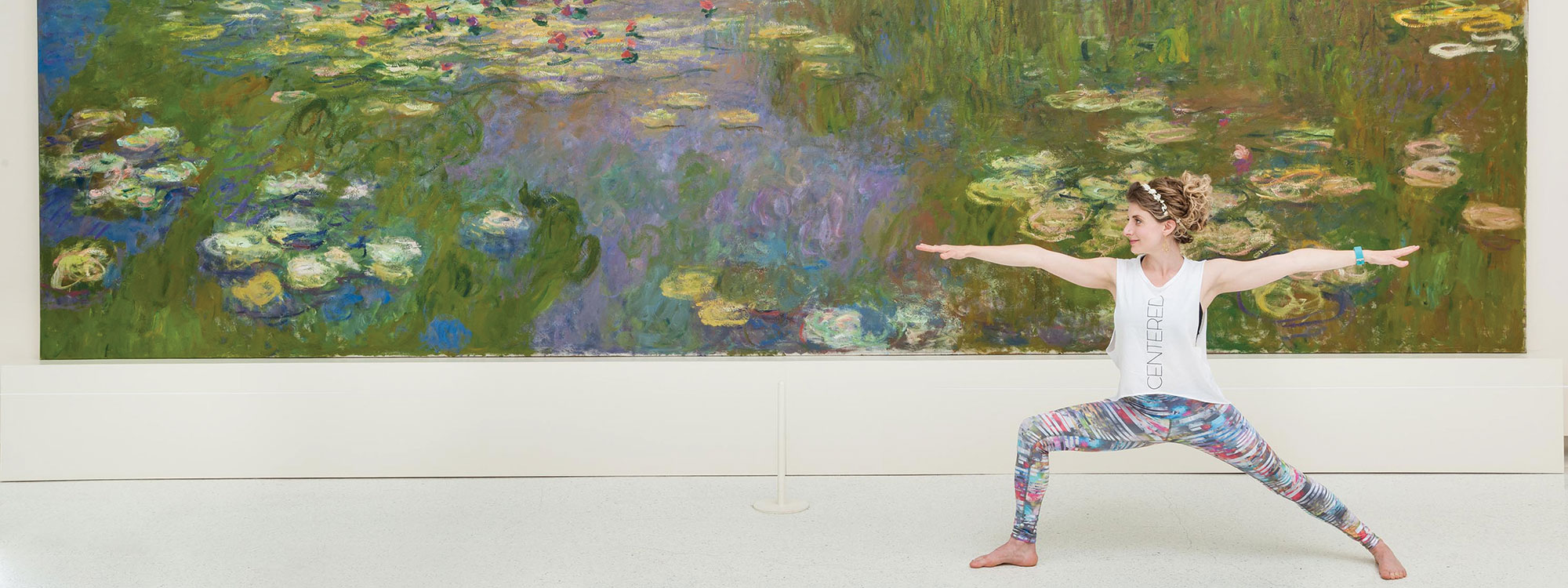The visitor did not like the painting the docent was showing his group and was letting everyone know. “I was floored,” recalls Lucy Stewart, associate curator of education at Carnegie Museum of Art. “We all were.” Stewart and the other participants weren’t dismayed by the man’s dislike; rather, they were amazed by the power of art to unlock his ability to communicate.
The man was part of an In the Moment gallery tour designed for people with dementia and Alzheimer’s disease and their caregivers. His daughter had reported that he was nonverbal, but something in the painting prompted him to speak after years of silence. “Art can nurture parts of your brain that aren’t dependent on memory,” says Stewart.
In the Moment began in 2008 and is based on a similar offering at the Museum of Modern Art in New York City. Anne Basting, a gerontologist and professor of English at the University of Wisconsin-Milwaukee, helped develop the training for MoMA’s initiative. “These programs use the emotional and symbolic language of art to form a relationship in the present,” explains Basting, who received a MacArthur Fellowship for her work integrating art into care settings. “They invite people into a radical presence with each other, which enables you to cross differences.”
Since joining the museum’s accessibility task force in 2018, Stewart, a museum educator for 25 years, has been expanding the ways the institution uses its collection to foster conversation, support wellness, and provide a more welcoming and equitable experience. This includes working with Veterans Affairs to offer In the Moment to a variety of individuals experiencing post-traumatic stress disorder, as well as adding American Sign Language tours, verbal descriptions of the art, and events for people with sensory sensitivities.
Growing up in Westmoreland County, Stewart regularly visited Carnegie Museum of Art with her family. “Those trips opened up the world to me,” she says. “For that reason, I believe at the core of my being that art is important to everyone’s well-being.”
“Everyone has what they need within themselves to visit an art museum.” – Educator Lucy Stewart
In fact, medical evidence continues to mount that experiences within the arts can reduce the symptoms of a variety of neurodegenerative diseases, strengthen the immune system, and decrease stress. And it’s encouraging more and more museums to connect art and wellness, to the benefit of its visitors. “We need meaning, purpose, and beauty in our lives,” says Basting, adding that these needs have become more urgent during the COVID-19 pandemic. “At the end of this, a lot of us will say nature and art saved my life.”
In the necessary shift to online programming, the popularity of wellness offerings at Carnegie Museum of Art continues to grow. The latest pilot: virtual chair yoga for seniors and those with limited mobility. Since April, thousands of people have visited the museum’s website to access a series of short, step-by-step, self-guided meditations paired with artwork from the museum’s collection, a way to slow down for “Self-Care Sunday.” Another well-received program: 30-minute guided art meditations via Zoom that are paired with artwork and incorporate a bit of art history, visualization exercises, and breath awareness facilitated by Lydia Kilian, a yoga, meditation, and music teacher. The sessions are pay what you wish. “When I visit museums, I find myself trying to see everything, but not always connecting with anything in particular,” Kilian says. “These meditations are about engaging mindfully in select art pieces in a way that is emotional and reflective rather than intellectual.”
Carnegie Museums member Tiffany Merovich-Winter signed up for Kilian’s sessions as one way to manage a chronic illness. “On the days we have class, I feel less anxious about the week ahead and calmer around my family,” she says. Antoinette Marino, who lives in Los Angeles and learned about the classes on Facebook, says, “It has real health benefits that will transcend the pandemic and make great works of art easily accessible to the general public.”
With the numbers of people with dementia growing exponentially, Basting sees art museums as offering a “cultural cure,” since these kinds of activities—from short meditations to hourlong tours featuring art—can slow the process.
In the Moment leverages the power of the museum’s collection while also acknowledging that each participant has something valuable to contribute. “There’s connection and trust. Everyone has an equal voice,” Stewart says, recalling a woman on a tour who had a common symptom of dementia: reading signs out loud. Instead of seeing that as a disruption, the docent appointed her in charge of reading each artwork’s label to the rest of the participants. Such moments destigmatize dementia symptoms and work against the feeling of invisibility that many older adults experience.
“Everyone has what they need within themselves to visit an art museum,” says Stewart. “The wellness programs are an opportunity to engage with art in whatever way you are comfortable.”
The Campbell Foundation supports In the Moment at Home and Chair Yoga. UPMC Health Plan sponsors Weekly Art Meditations and Self-Care Sunday Meditations.
Receive more stories in your email
Sign up
